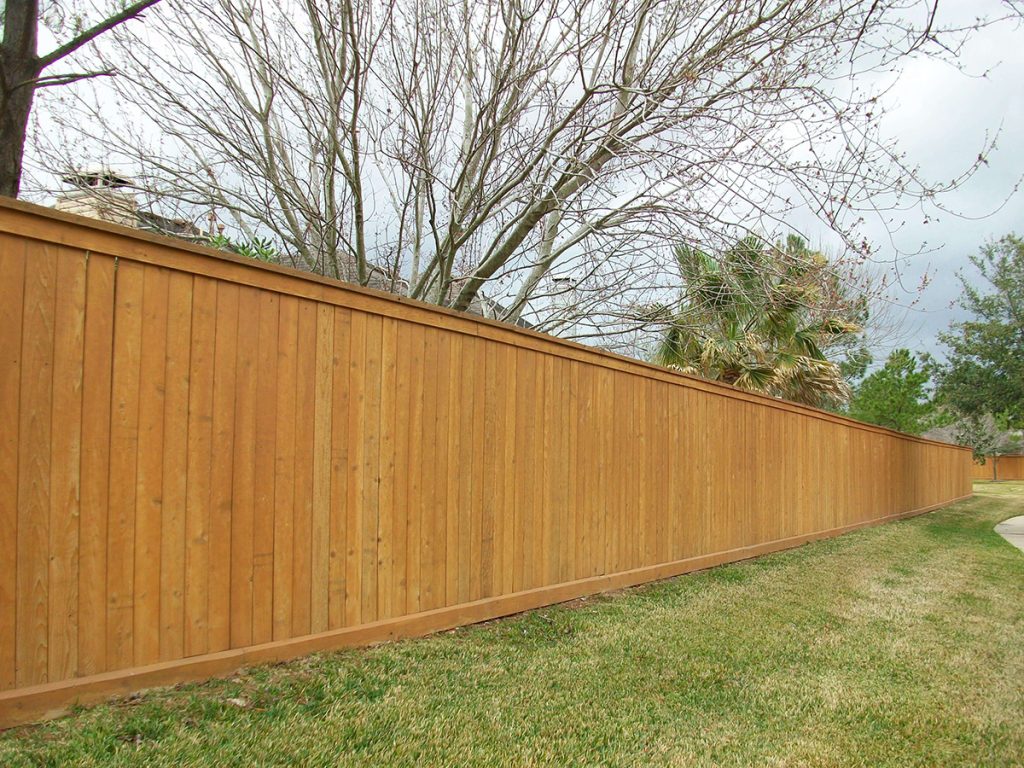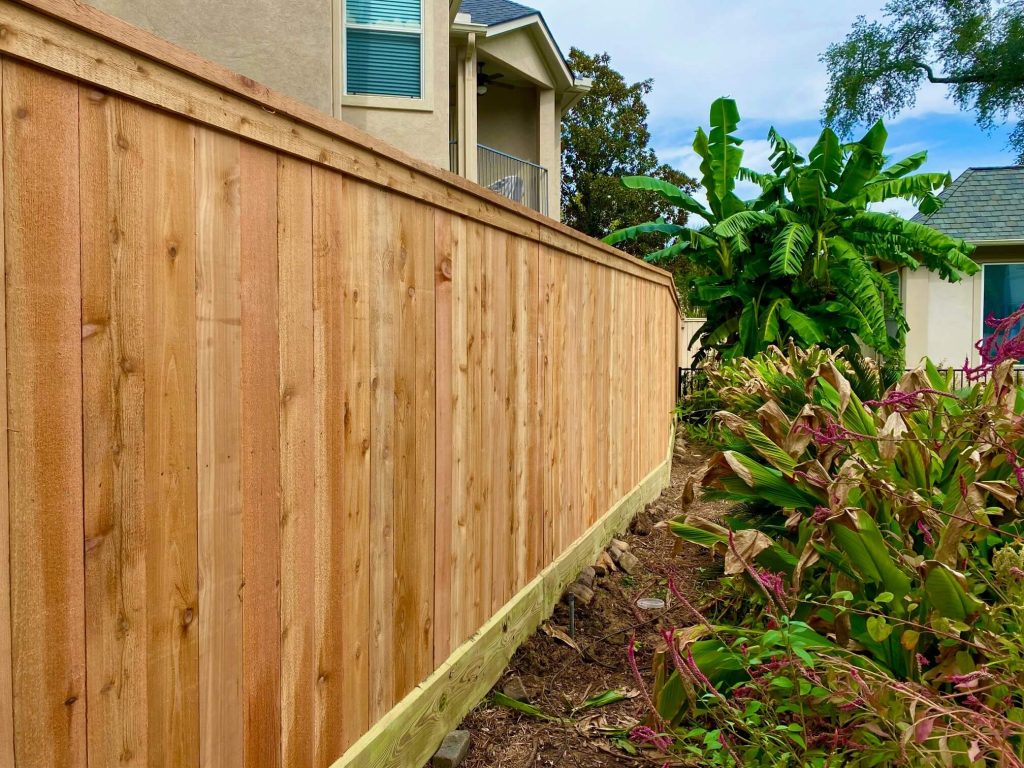Why Western Cedar Fences Are a Top Choice: Pros, Cons, and Costs
When we consider fencing options for our properties, western cedar fences consistently emerges as a standout choice among homeowners and contractors alike. We’ll explore why this remarkable wood species has become a gold standard in residential fencing, from its stunning natural grain patterns to its impressive durability against harsh weather conditions. While the initial investment might raise eyebrows, the long-term benefits and minimal maintenance requirements often justify the cost. Let’s examine the key factors that make western cedar fencing a compelling option and what you should know before making your decision.

Key Points
- Western Cedar’s natural beauty and distinctive grain patterns create an elegant appearance that enhances property value and curb appeal.
- The wood’s natural oils provide excellent resistance against decay, insects, and weather damage, lasting 15-30 years without chemical treatments.
- Annual maintenance is minimal, requiring only basic cleaning and occasional sealing to maintain its appearance and protective properties.
- Installation requires specific techniques and proper spacing, making professional installation recommended for optimal long-term performance.
- While initially more expensive than some alternatives, Cedar’s durability and low maintenance costs provide good value over its lifespan.
Natural Beauty and Aesthetic Appeal
When considering Western Cedar fencing, the wood’s rich, warm tones and distinctive grain patterns immediately stand out as defining features. We’ve found that the natural reddish-brown to honey-gold hues create an inviting atmosphere that complements any landscape design, from traditional to contemporary.
What sets Western Cedar apart is how it ages gracefully. Without treatment, it weathers to a distinguished silver-gray patina that many of us in the industry consider equally appealing. We can maintain the original color through periodic sealing, or let nature take its course – both options yield professional results. The wood’s straight grain and uniform texture create clean lines that enhance property aesthetics, while subtle variations in each board guarantee our fences have character without appearing artificial or mass-produced.
The natural oils present in Western Red Cedar provide built-in protection that enhances both its beauty and longevity.
Weather and Decay Resistance
Western Cedar’s exceptional resistance to decay and weather damage stands among its most valuable attributes. We’ve found that this wood naturally produces protective oils and chemicals that ward off rot, fungi, and insect infestations. These compounds remain active throughout the wood’s lifetime, making it considerably more durable than many other fence materials.
When we examine Western Cedar’s cellular structure, we’ll notice it’s dense yet contains air pockets that provide excellent insulation. This characteristic helps the wood resist warping and splitting during temperature fluctuations. In coastal or high-moisture environments, we can expect Western Cedar fences to maintain their structural integrity for 15-30 years with minimal maintenance. The wood’s natural resistance to moisture also prevents the metal fasteners we use from corroding prematurely.
The reddish-brown hue of Western Red Cedar makes it a striking addition to any landscape while maintaining its protective qualities.
Environmental Impact and Sustainability
We’ve found Western Cedar to be an environmentally conscious choice due to its natural resistance to decay, which eliminates the need for chemical treatments that can harm ecosystems. The wood’s inherent durability means we don’t need to replace fencing as frequently as other materials, reducing long-term resource consumption.
Today’s sustainable forest management practices guarantee Western Cedar remains a renewable resource, with many suppliers adhering to strict harvesting and replanting protocols. The wood’s low carbon footprint and biodegradability make it an ideal choice for eco-friendly homeowners focused on reducing environmental impact.
Natural Decay Resistance
Thanks to its high concentration of natural oils and fungicidal compounds, Western Cedar offers exceptional resistance against decay, rot, and insect infestation without requiring chemical treatments. We’ve seen this wood perform remarkably well even in challenging environments where moisture and pests typically cause rapid deterioration of other fence materials.
When we’re installing Western Cedar fences, we can expect them to last 15-25 years with minimal maintenance, and even longer with proper care. The heartwood, which we particularly value for fencing, contains thujaplicins – natural preservatives that give cedar its distinctive aroma and protection. These compounds work continuously throughout the wood’s lifetime, making it resistant to termites, carpenter ants, and various wood-boring insects that often plague other fence materials.
Forest Management Practices
Most Western Cedar used in fencing comes from sustainably managed forests in the Pacific Northwest, where strict regulations govern harvesting practices. We’re committed to responsible sourcing, and when we choose Western Cedar, we’re supporting forests that follow careful replanting schedules and selective cutting methods.
Young cedars growing beneath mature forest canopies Specialized equipment making precise cuts to preserve surrounding trees Professional foresters marking trees for selective harvest Native wildlife corridors maintained between harvest zones Newly planted cedar saplings in managed regeneration areas
Together, we’re participating in a cycle that safeguards Western Cedar’s availability for future generations. These practices maintain forest health while providing the high-quality lumber we need for fencing, making Western Cedar a responsible choice that balances environmental stewardship with practical construction needs.
Installation Methods and Requirements
While installing a Western Cedar fence requires careful planning and proper technique, the process follows standard fence construction methods with a few material-specific considerations. We’ll need to set posts at least 2 feet deep or below the frost line, using gravel for drainage and concrete for stability. It’s crucial to space posts no more than 8 feet apart to prevent sagging.
When we’re working with Western Cedar boards, we must pre-drill holes to prevent splitting and use hot-dipped galvanized or stainless steel fasteners to avoid staining. We should maintain a 2-inch clearance between the bottom boards and ground level to prevent moisture damage. For ideal results, we’ll want to seal end cuts and apply a protective finish to extend the fence’s lifespan. The fence’s natural oils protect against decay and insects, making it a durable choice for outdoor applications.
Maintenance and Long-Term Care
After completing installation, proper maintenance becomes the key factor in maximizing your Western Cedar fence’s longevity. We’ll need to perform regular inspections and maintenance tasks to protect our investment and maintain the fence’s natural beauty. Let’s focus on these essential care requirements that’ll keep our cedar fence strong and attractive for years to come.
- Inspect posts and boards annually for signs of rot, especially near ground contact points
- Clean the fence surface with a soft-bristled brush and mild soap solution every 18-24 months
- Apply a UV-resistant sealer or stain every 2-3 years to prevent graying and moisture damage
- Remove any climbing vines or vegetation that could trap moisture against the wood
- Maintain proper drainage around fence posts and keep soil levels below the bottom board
Watch for termite warning signs like small holes or swarming insects around your fence, as early detection can prevent extensive structural damage.
Cost Analysis and ROI
Let’s examine Western cedar fencing costs, which typically range from $25-35 per linear foot installed, representing a higher initial investment compared to pressure-treated pine at $15-25 per linear foot.
While the upfront costs are steeper, we’ll find Western cedar’s natural resistance to decay and insects reduces long-term maintenance expenses, often resulting in a break-even point around year 12-15 of ownership.
When we calculate the total cost of ownership, Western cedar’s 25-30 year lifespan and minimal treatment requirements can make it more economical than alternatives that require frequent replacement or maintenance.
The natural oils present in Western red cedar provide built-in protection against moisture damage, helping justify the premium pricing.
Initial Investment Breakdown
Before committing to a Western Cedar fence, homeowners should understand the detailed cost structure and return on investment. We’ll break down the primary expenses you’ll encounter when investing in a Western Cedar fence, helping you plan your budget effectively.
- Premium-grade Western Cedar boards: $8-12 per linear foot
- Galvanized steel posts and concrete footings: $25-35 per post
- Stainless steel fasteners and hardware: $3-5 per linear foot
- Professional installation labor: $12-15 per linear foot
- Protective sealant or stain: $30-45 per gallon
For a typical 150-foot residential fence installation, you can expect total costs between $4,500 and $7,000, depending on height, design complexity, and local labor rates. These costs reflect current market prices, though regional variations exist. We recommend getting multiple quotes from licensed contractors.
Long-Term Value Assessment
While the initial investment in a Western Cedar fence may seem substantial, analyzing its long-term value reveals considerable financial benefits over 15-20 years of ownership. We’ve found that cedar fences typically maintain their structural integrity with minimal maintenance costs, requiring only periodic cleaning and sealing every 3-5 years.
When we compare Western Cedar to other fencing materials, we’re looking at an average ROI of 65-75% at resale, markedly higher than pressure-treated pine or composite options. The natural resistance to decay, insects, and weather damage means we’ll spend less on repairs and replacements over time. Additionally, as cedar ages gracefully to a distinguished silver-gray patina, we’re not faced with the costly need to paint or stain to maintain aesthetics, unlike many alternative materials.
Price vs. Other Materials
The current market pricing for Western Cedar fencing ranges from $28-35 per linear foot installed, positioning it 30-40% higher than pressure-treated pine ($18-25 per linear foot) and 15-20% lower than composite materials ($35-45 per linear foot). When we analyze the cost-benefit ratio, Cedar’s natural durability and minimal maintenance requirements offset its higher initial investment compared to pine.
Premium-grade Cedar boards with tight, straight grain patterns that enhance property aesthetics. Natural oils that resist decay and insect infestation without chemical treatments. Weathered silver-gray patina that develops over time, creating a distinguished look. Dimensional stability that reduces warping and twisting common in cheaper alternatives. Lightweight material that decreases installation labor costs and foundation requirements.
We’ve found that Cedar’s 15-20 year lifespan, combined with its lower maintenance costs, makes it a cost-effective choice for most homeowners.
Design Options and Styles
Western cedar’s natural beauty and versatility make it an ideal material for numerous fence designs, from classic picket styles to modern horizontal layouts. We can craft traditional vertical board fences with dog-ear, flat-top, or pointed finishes, or opt for contemporary shadow box patterns that create visual interest from both sides.
For those seeking privacy, we’ll often recommend board-on-board configurations that eliminate gaps between pickets. Lattice-topped designs add decorative flair while maintaining airflow, and post-and-rail styles showcase cedar’s rustic charm. We can also incorporate custom elements like curved gates, diagonal patterns, or varied board widths. The material’s workability lets us create French Gothic, estate-style, or louvered designs that complement any architectural style. Adding sustainable wood choices to your outdoor space not only enhances curb appeal but also supports environmentally responsible forestry practices.
Common Issues to Consider
Despite cedar’s design versatility, homeowners must understand several key maintenance and durability factors before installation. We’ve found that western cedar fences can develop specific issues over time, though proper planning helps minimize these concerns.
Let’s examine the most common challenges we’ll need to address:
- Graying or silvering of the wood when left untreated, which begins within the first year
- Natural tannin bleeding that can stain nearby concrete or light-colored surfaces
- Potential warping or cupping of boards during extreme temperature fluctuations
- Surface checking and splitting, particularly in areas with high sun exposure
- Soil contact degradation at ground level, requiring proper post installation techniques
Understanding these inherent characteristics helps us make informed decisions about installation methods, maintenance schedules, and protective treatments that’ll extend our fence’s lifespan. Installing a pressure-treated rot-board at the base of the fence can significantly reduce moisture damage to cedar pickets.
Comparing Cedar Against Alternatives
When we compare cedar fencing to common alternatives like pressure-treated pine and vinyl, we find distinct advantages and limitations for each material.
We’ve observed that pressure-treated wood offers greater rot resistance at a lower cost than cedar, though it lacks cedar’s natural beauty and can warp over time.
Vinyl fencing requires minimal maintenance and lasts longer than both wood options, but it comes with a higher upfront cost and doesn’t provide the authentic wood aesthetic that cedar delivers.
Cedar’s natural oils and resins make it naturally resistant to insects and decay without requiring chemical treatments.
Cedar Vs Pressure-Treated Wood
Many homeowners face a critical decision between cedar and pressure-treated lumber when planning their fence project. While both materials offer durability, we find that cedar provides natural resistance to decay and insects without chemical treatments. Pressure-treated wood achieves its protective qualities through chemical preservation processes, making it less environmentally friendly but often more affordable.
Cedar’s rich, warm tones create an inviting natural backdrop for gardens. Pressure-treated wood’s greenish tint gradually weathers to gray. Cedar’s tight grain patterns showcase premium wood aesthetics. Pressure-treated lumber can warp and twist as it dries. Cedar maintains dimensional stability with minimal shrinkage.
When we examine long-term value, cedar’s natural properties and aesthetic appeal often outweigh its higher initial cost. For budget-conscious projects, pressure-treated wood remains a practical alternative, though it may require more maintenance over time.
Cedar Against Vinyl Fencing
Vinyl fencing stacks up against cedar with distinct advantages and drawbacks in today’s residential fencing market. While vinyl offers virtually maintenance-free longevity and consistent coloring, it can’t match cedar’s natural beauty and architectural charm. We’ve found that vinyl typically costs 10-15% more upfront than cedar but eliminates annual maintenance expenses.
Cedar provides better sound dampening and environmental sustainability, as it’s biodegradable and sourced from renewable forests. However, vinyl resists insects, never rots, and won’t splinter – qualities that many homeowners prioritize. We should note that vinyl can become brittle in extreme temperatures and may fade over time, while cedar, when properly maintained, ages gracefully with a distinguished patina. The choice often comes down to weighing aesthetic preferences against maintenance commitments.
Professional Vs DIY Installation
Although installing Western Cedar fences may seem straightforward, homeowners must weigh several factors before deciding between professional installation and DIY. We’ve found that professional installations typically cost 2-3 times more than DIY projects but offer pivotal advantages like permitting expertise, proper post-hole depth, and precise alignment.
A contractor’s crew efficiently setting posts in concrete while maintaining perfect spacing. Expert installers using laser levels to guarantee each panel sits perfectly straight.
DIY enthusiasts struggling with rocky soil and underground utilities. Homeowners carefully measuring and cutting cedar panels in their driveway.
Professional teams completing a 150-foot fence in two days versus a week for DIY.
If you’re considering DIY, we recommend evaluating your skill level, available time, and necessary tools against the complexity of your specific fencing project.
Split rail fences offer an attractive alternative for those seeking a more traditional rustic appearance at a lower installation cost.

Frequently Asked Questions
How Long Does Western Cedar Need to Cure Before Staining or Painting?
We recommend letting western cedar weather for 2-4 weeks before applying any finish. If it’s freshly milled, we’ll want to wait 3-4 months for proper moisture content levels.
Can Western Cedar Fencing Attract Specific Types of Insects or Wildlife?
We’ve found cedar’s natural oils repel most insects, though carpenter bees and wood-boring beetles can occasionally target it. Birds may nest in fence gaps, but they won’t damage properly maintained cedar fencing.
Is Western Cedar Safe for Pets Who Might Chew on the Fence?
We’re confident that Western cedar is safe for pets, as it’s naturally non-toxic. While we don’t recommend letting pets chew any wood, cedar won’t harm them if they occasionally nibble.
Will Western Cedar Splinter More Easily Than Other Wood Types?
We find Western Cedar actually splinters less than many other fence woods. Its straight grain and natural oils create a more splinter-resistant surface when properly maintained through regular sealing and care.
Can Western Cedar Fencing Affect the Growth of Nearby Plants or Gardens?
We find cedar fences don’t harm nearby plants; they actually release natural compounds that can protect gardens from pests. Cedar’s allelopathic properties mainly affect moss and fungal growth, not typical garden plants.
Takeaway
We’ve examined the key aspects of western cedar fencing, from its natural resistance to decay to its environmental benefits. When properly installed and maintained, cedar fencing delivers exceptional value through its 15-30 year lifespan. While initial costs exceed some alternatives, cedar’s durability, minimal maintenance requirements, and aesthetic qualities make it a sound investment for both residential and commercial applications.








